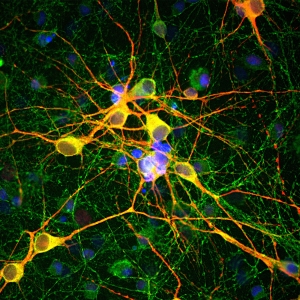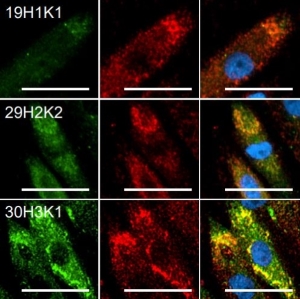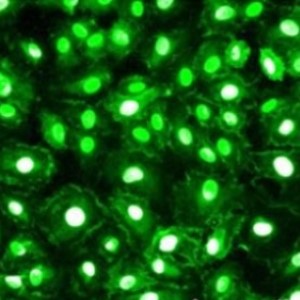Late in 2024, Dartmouth researchers published a paper using our GFP-expressing human glioblastoma cells (U87 MG) (cat. TR01-GFP) in fluorescent-guided surgery research. The scientists cultured Neuromics GFP-expressing U87 MG cells and then inserted them into a mouse model. After testing several fluorescent agents, they found one, tetramethylrhodamine conjugated to a small polyethylene glycol chain (TMR-PEG1k), performed the best (learn more here).
Well, the same researchers are back again, releasing more fluorescent imaging research utilizing our GFP-expressing U87 MG cells. Like in the previous study, the researchers inserted our cells into a mouse model and compared the results to TMR-PEG1k. However, this time, the focus our their study was different.
Image: An illustration of Neuromics’ GFP expressing human glioblastoma cells (U87 MG) compared to the contrast agent TMR-PEG1k in mice.

While fluorescence-guided surgery continues to become more popular and widely used, the methods to evaluate contrast agents are far from standardized. In the paper released earlier this month, the scientists found that a contrast agent's performance can vary significantly based on how the tumor and background regions of interest (ROI) are defined. The investigators suggest future studies on contrast agents should carefully select ROIs and have clear descriptions so surgeons can apply results productively. Read the full study here.
Neuromics maintains a wide selection of human GFP-expressing and RFP-expressing cancer cell lines. Other cell lines for cancer research include our human cancer associated fibroblasts (CAFs) and cancer cell lines. You can explore all of our options here.






